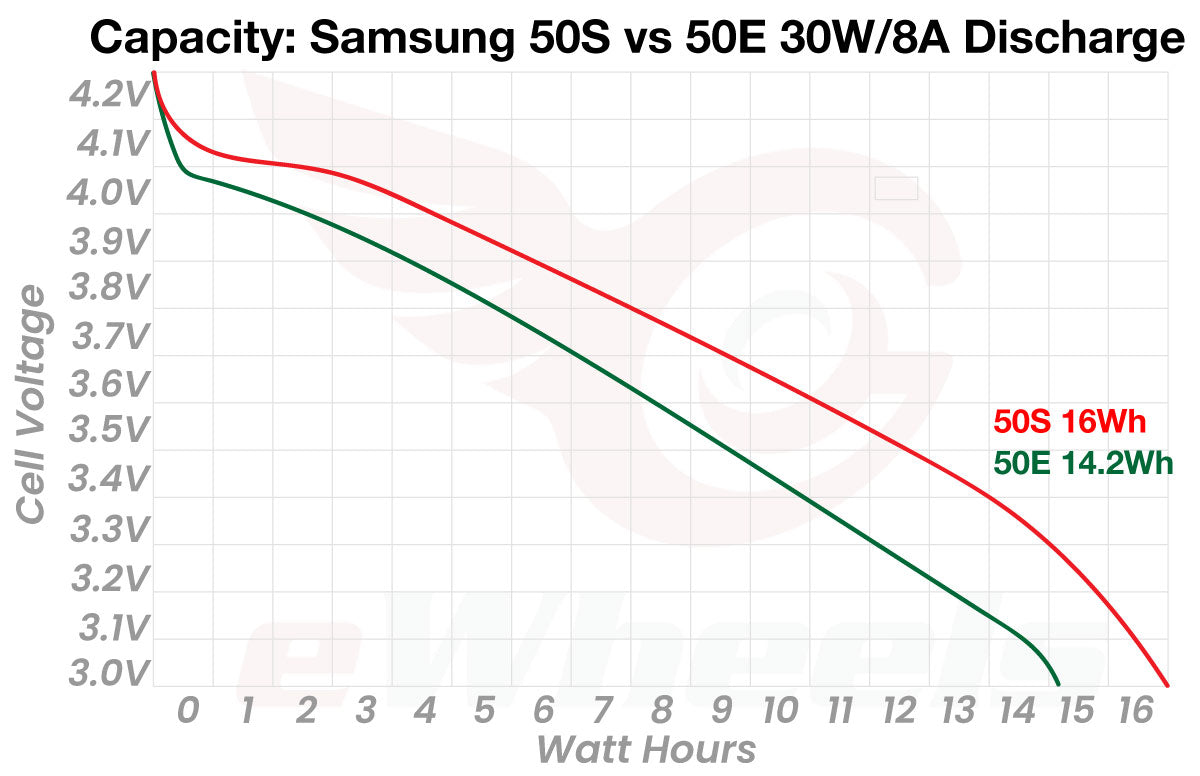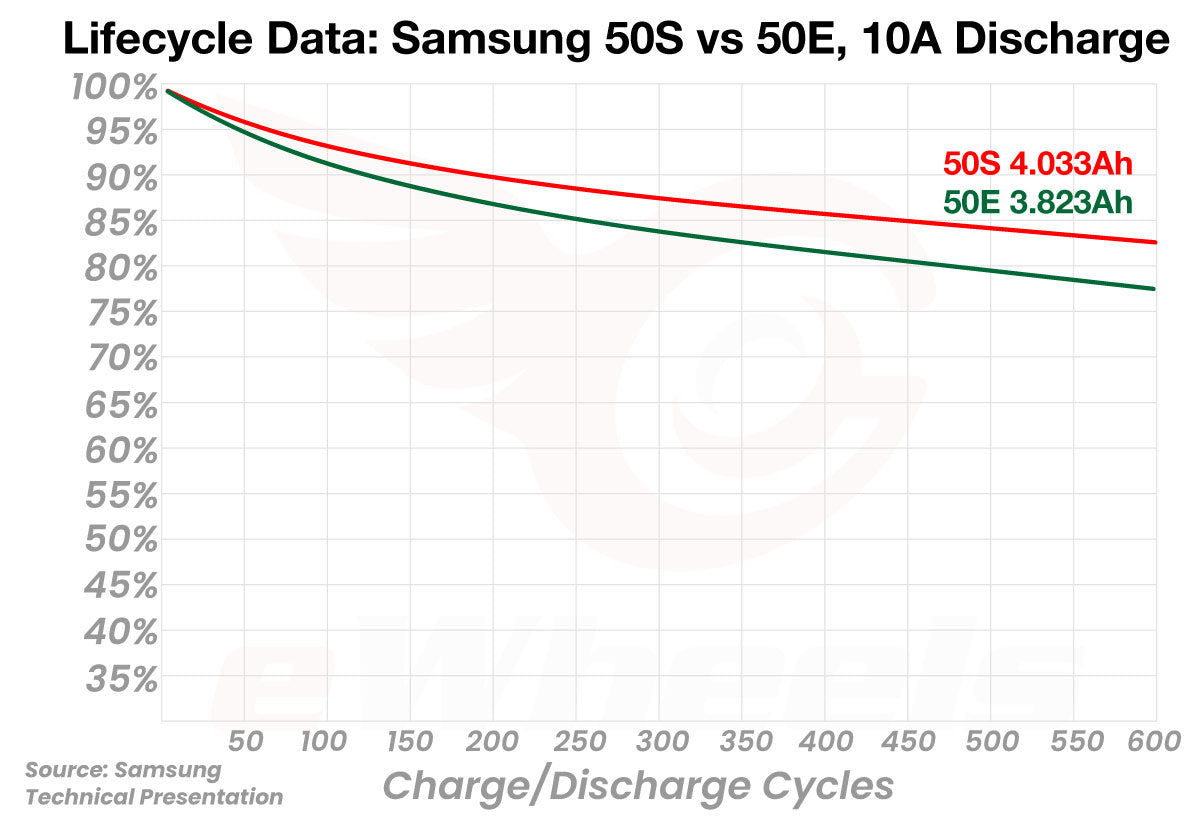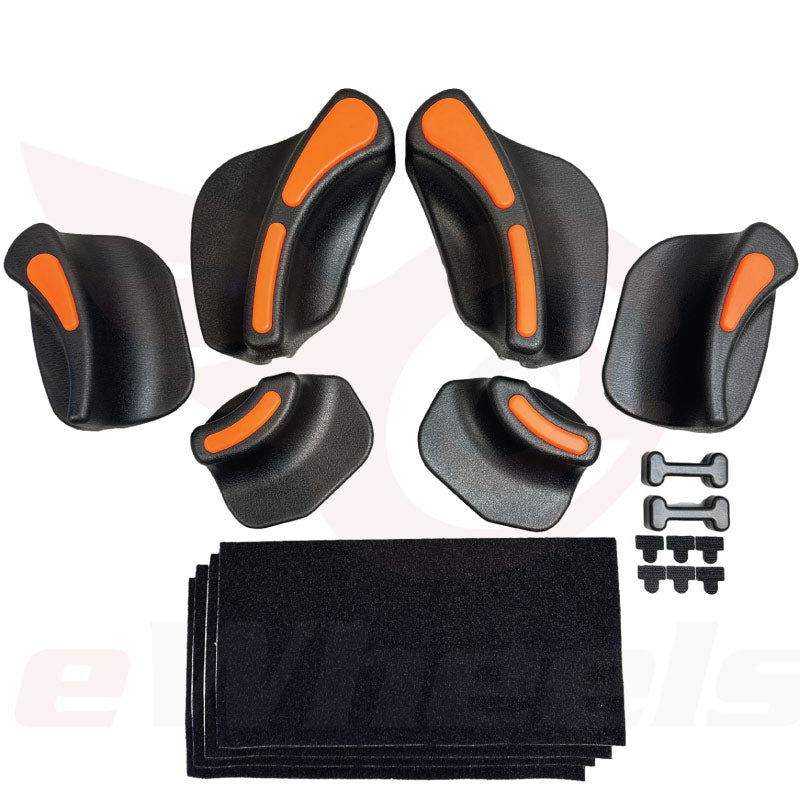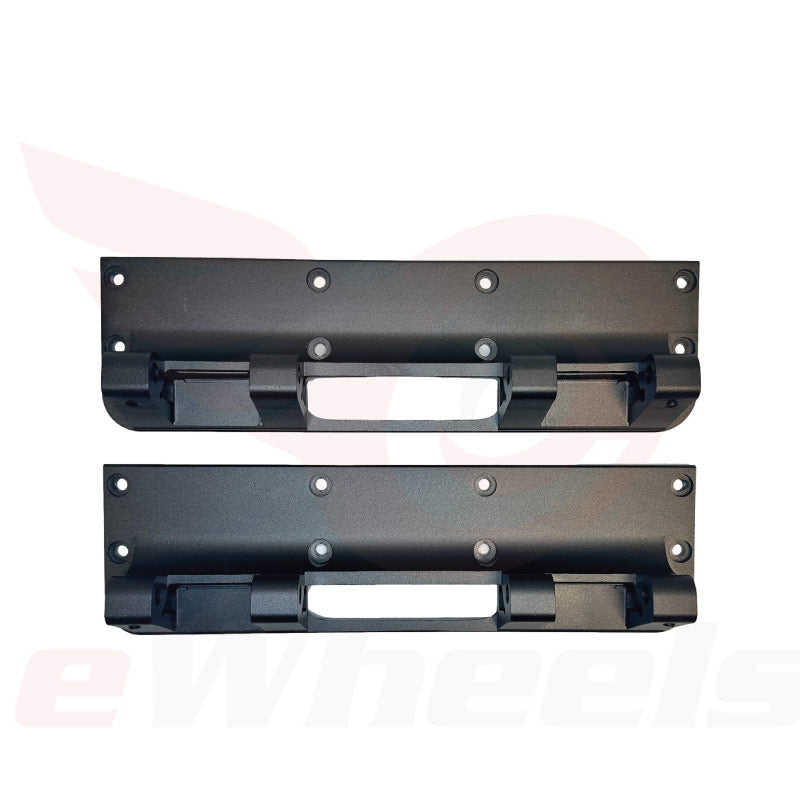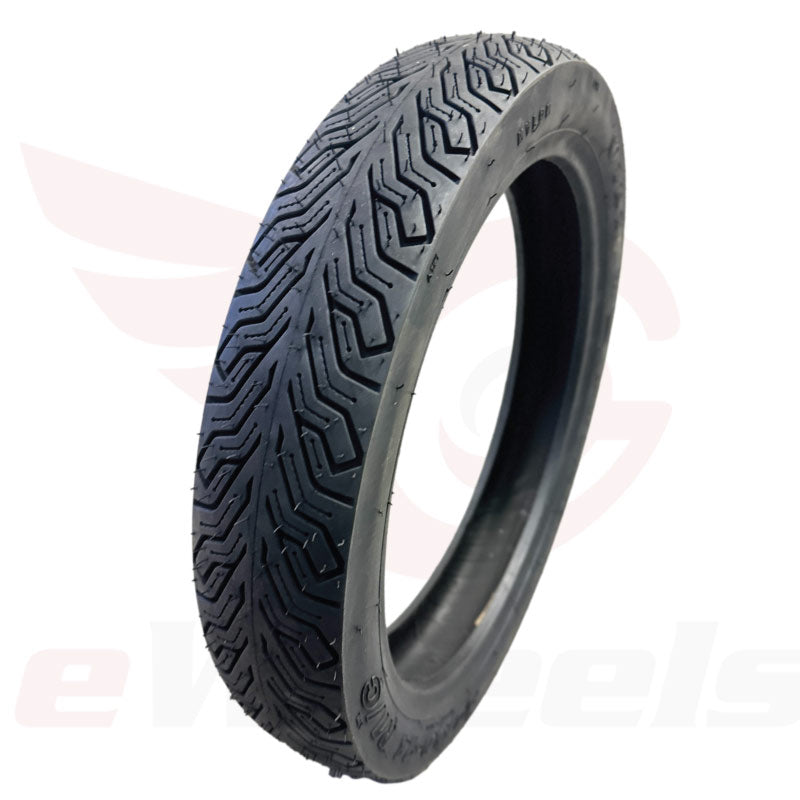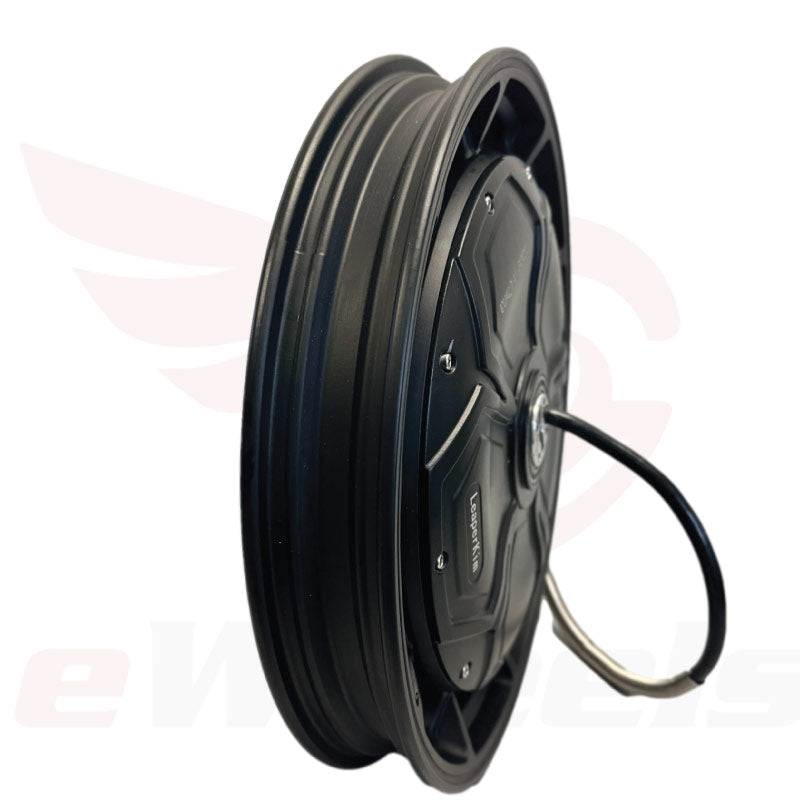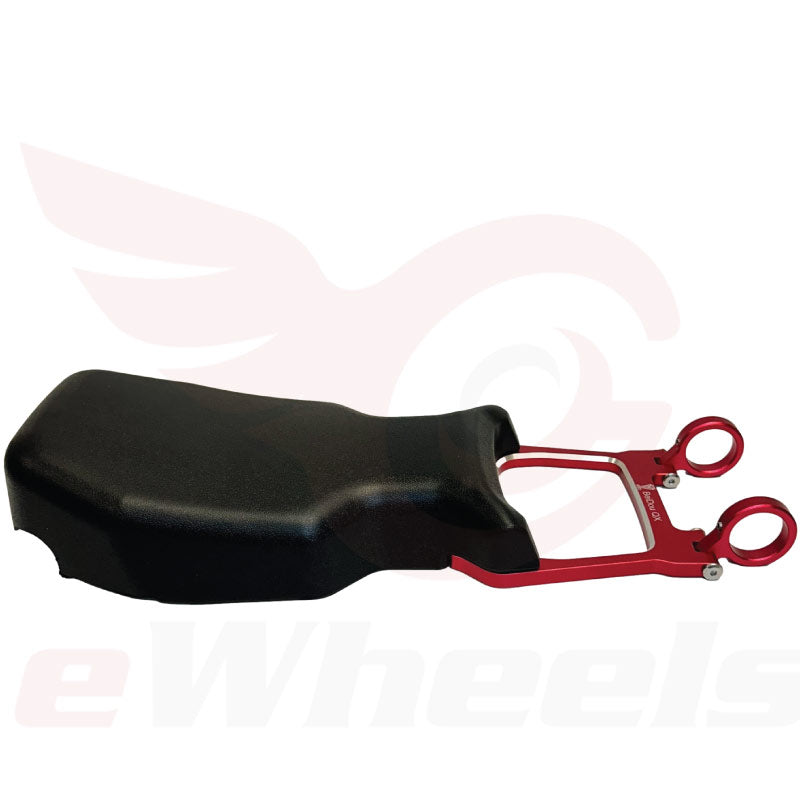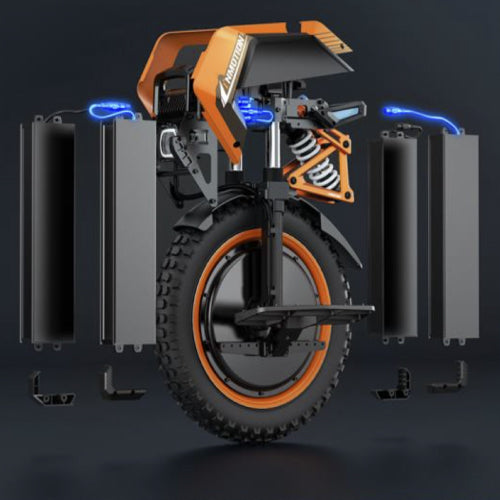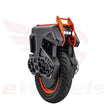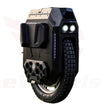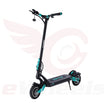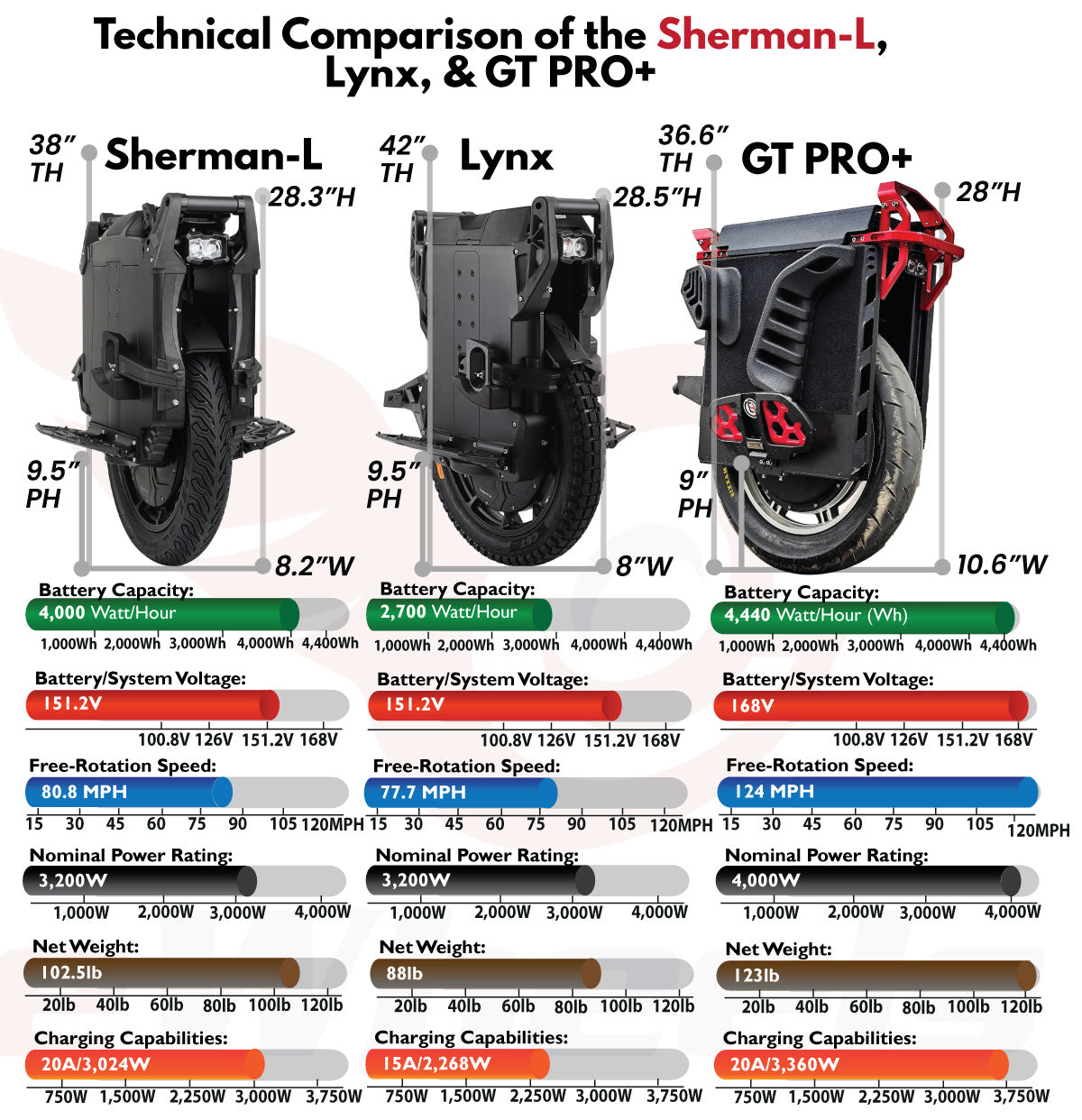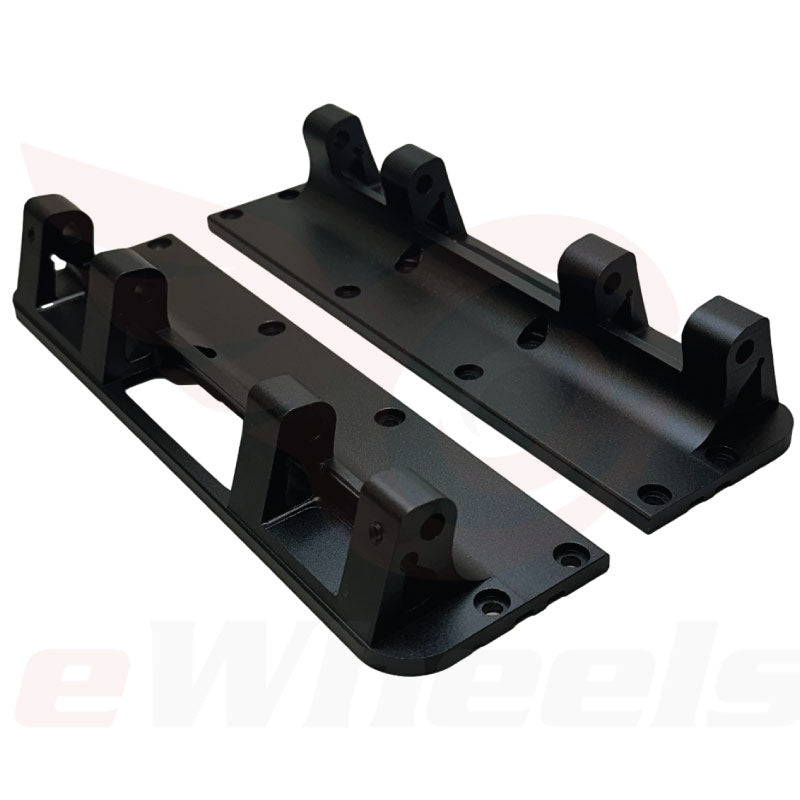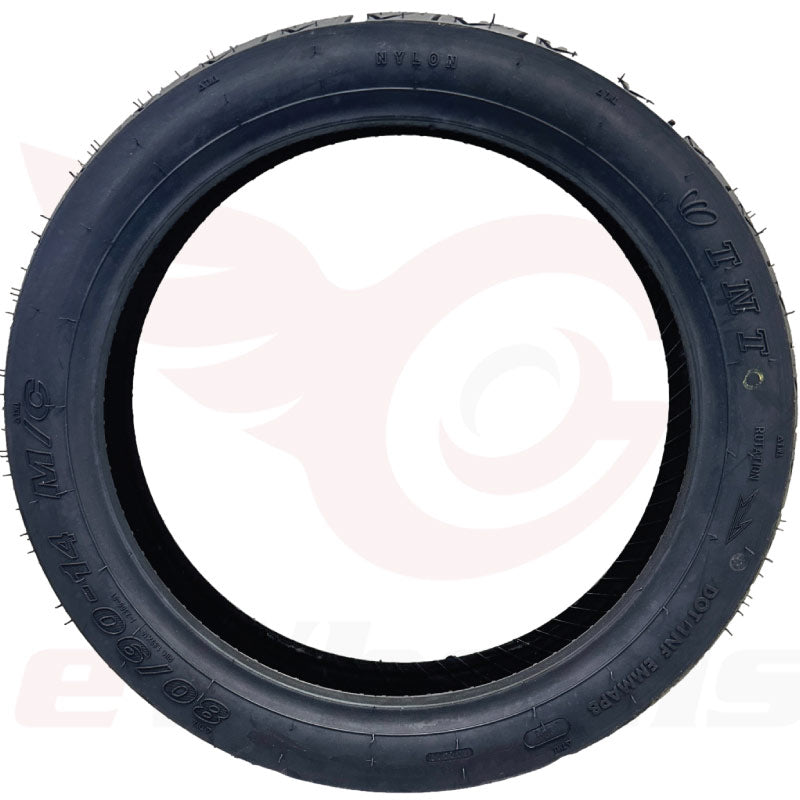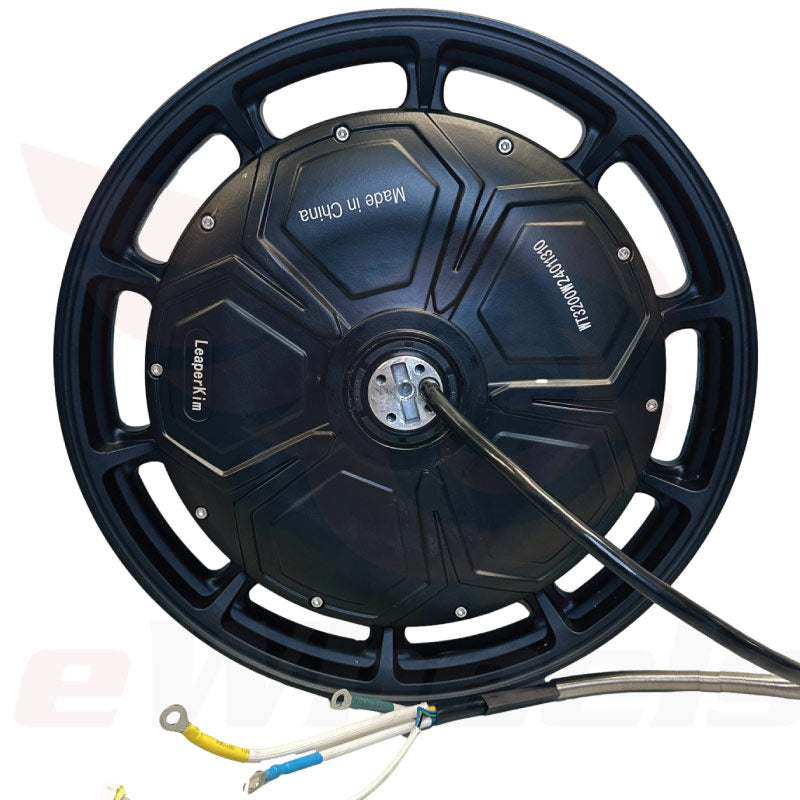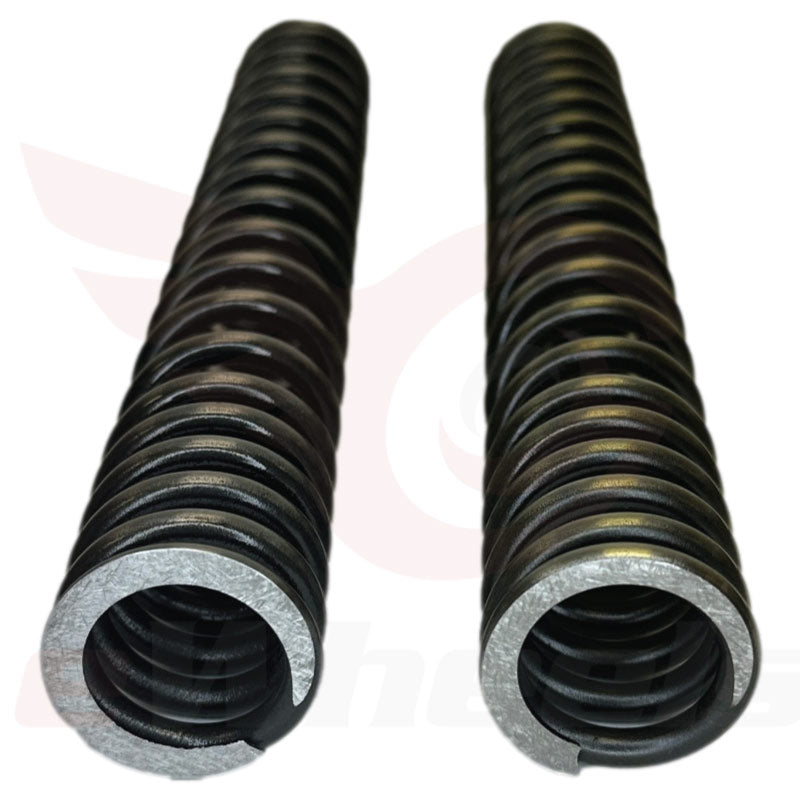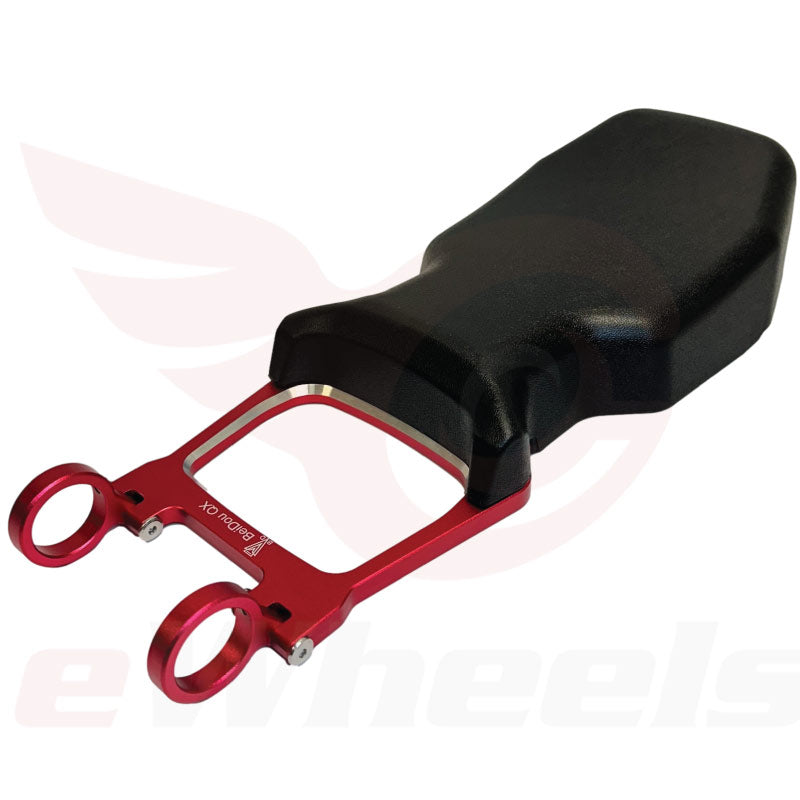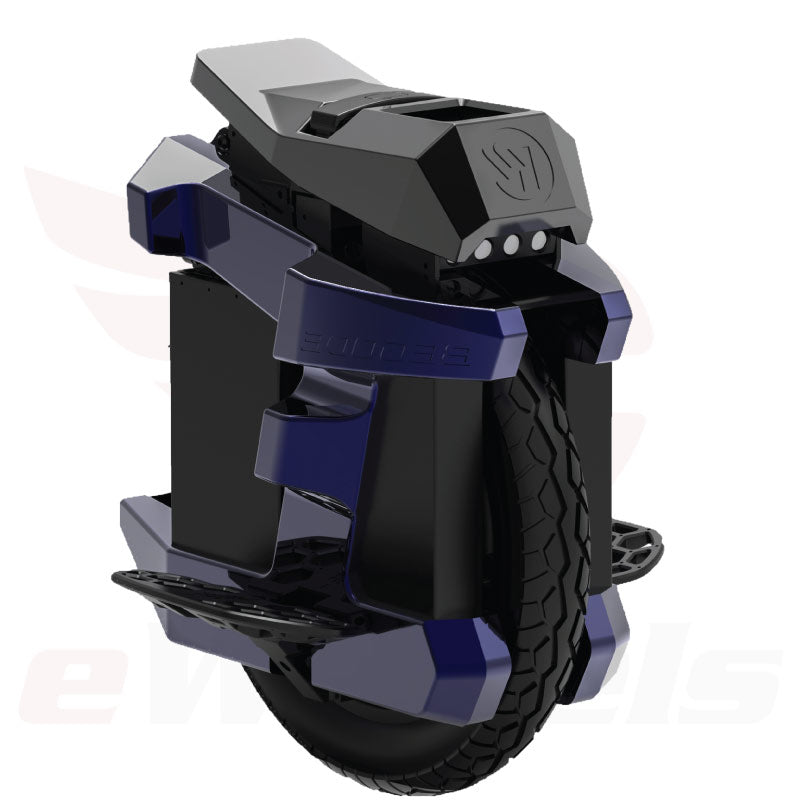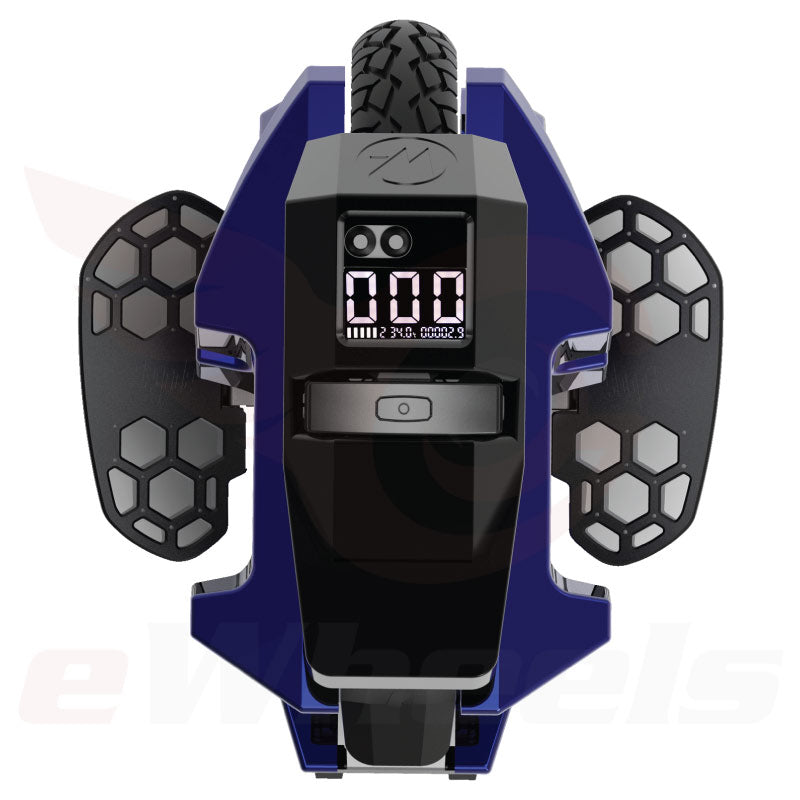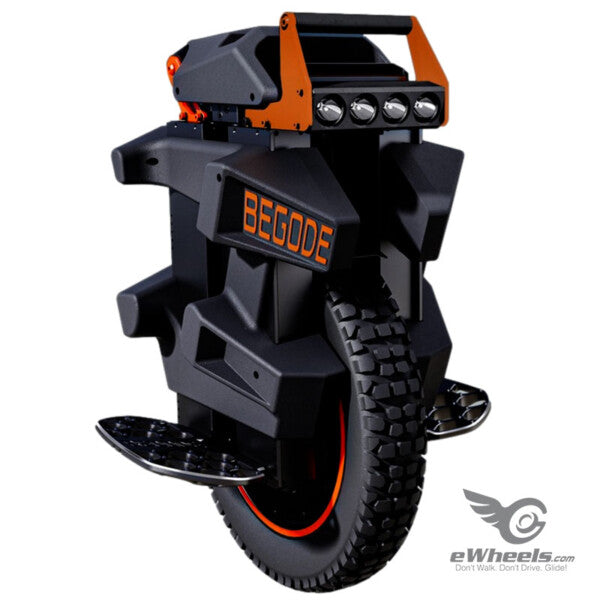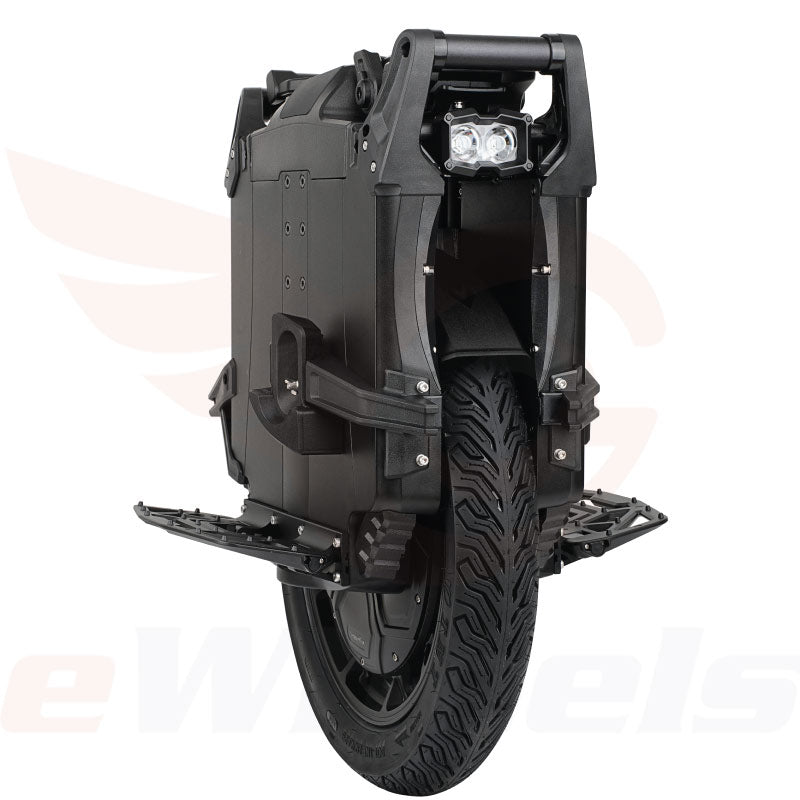
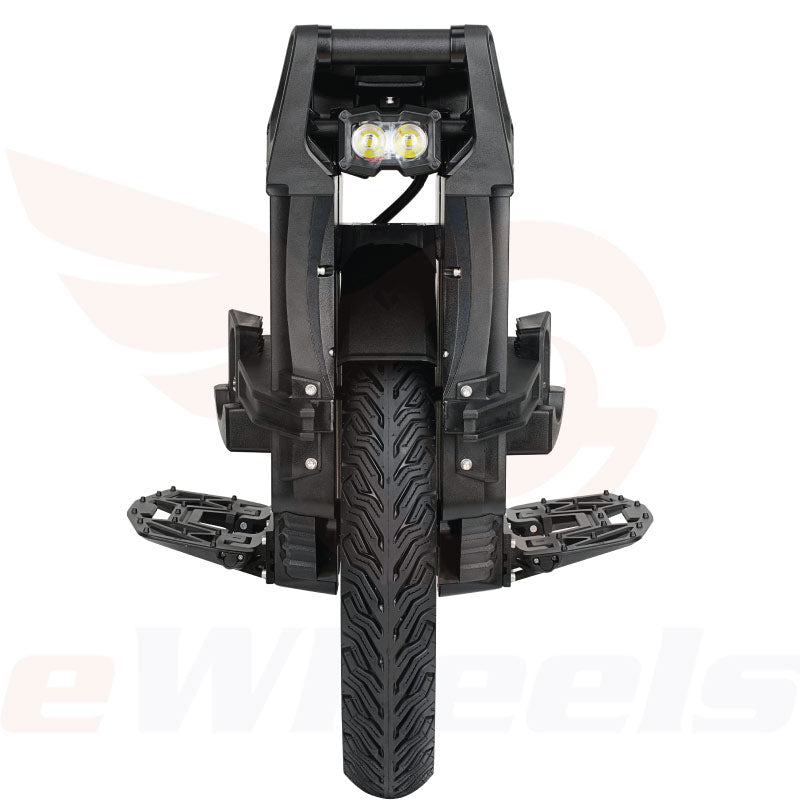
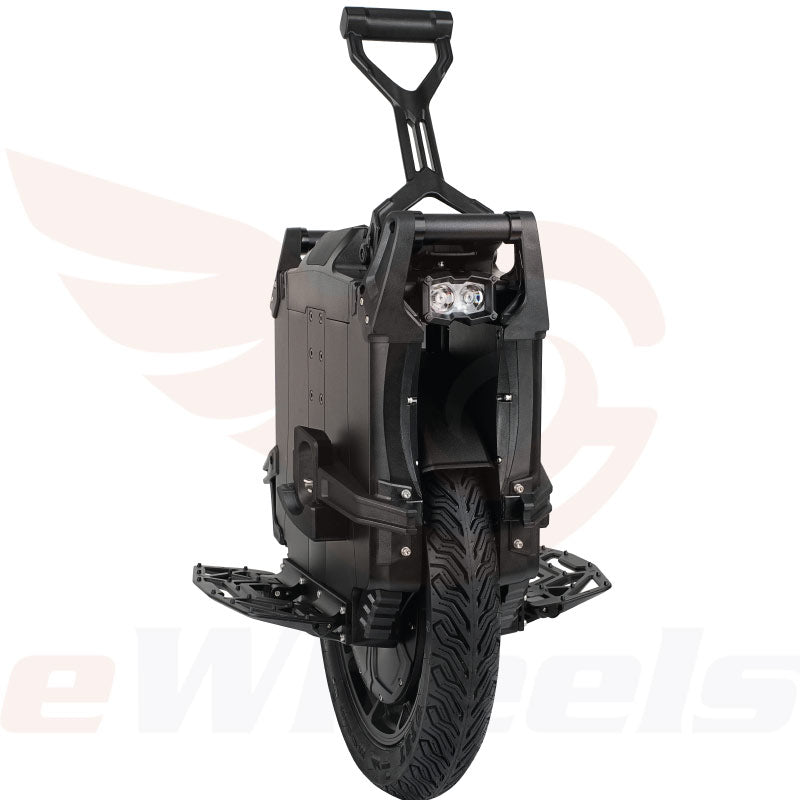
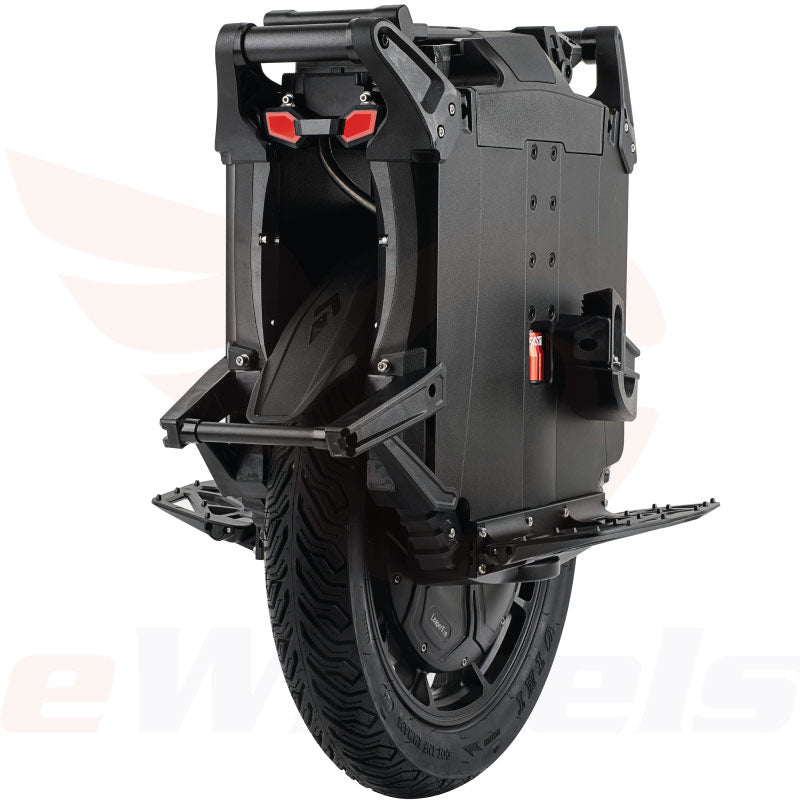

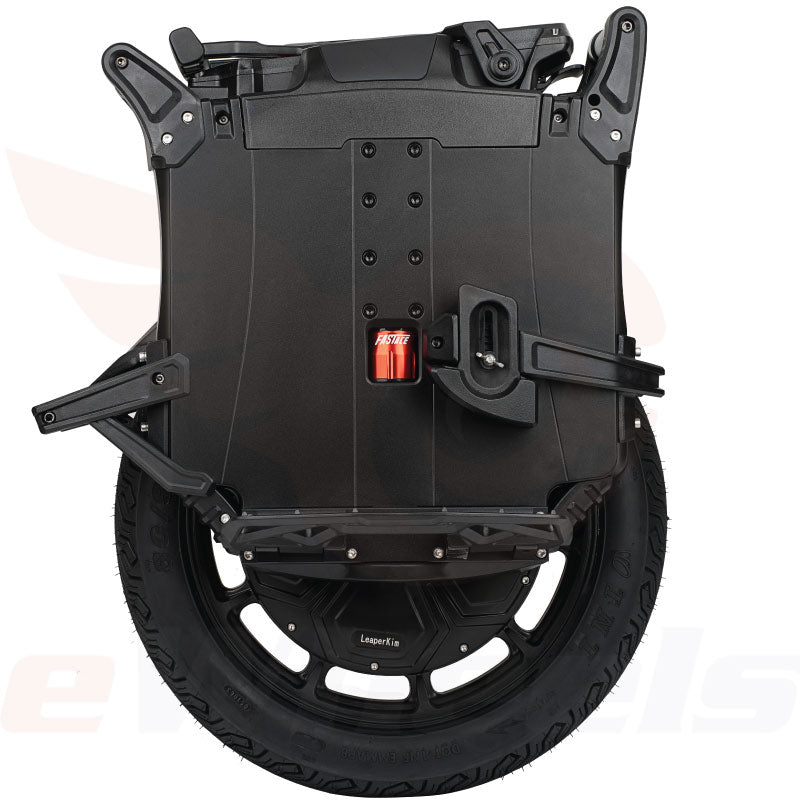
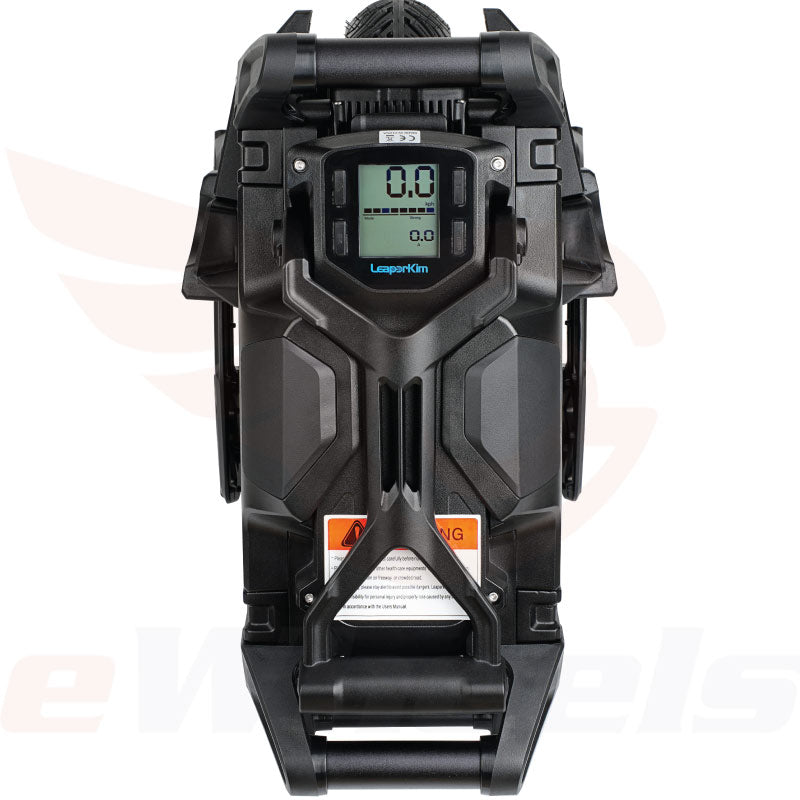
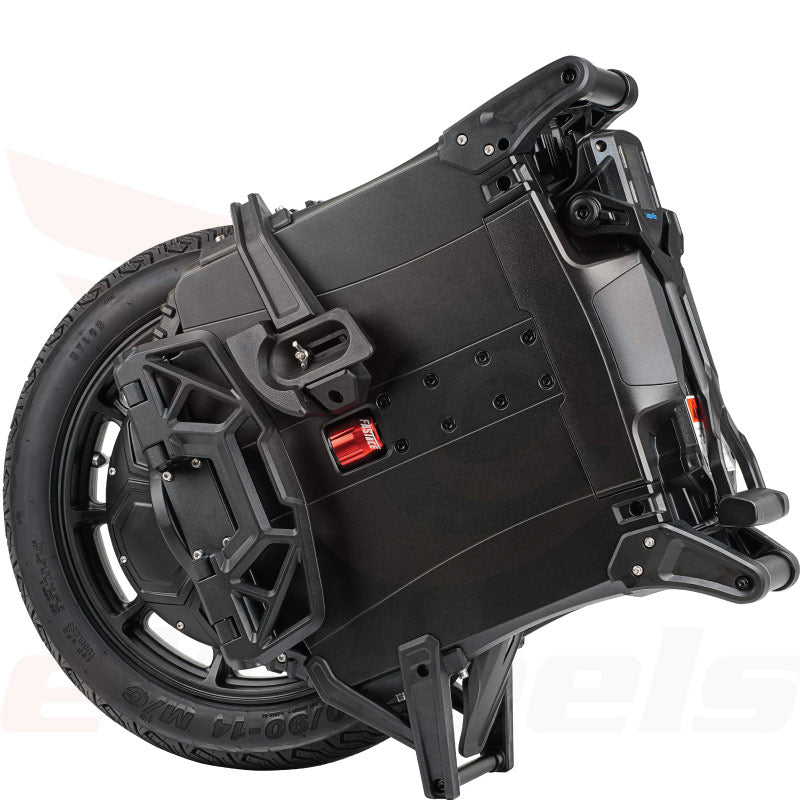
Veteran Sherman-L, 4,000Wh Battery/3,200W Motor (8KW Peak)
- All Variants, Back in Stock
- Building on the success of the Lynx, the Sherman-L provides a similar performance package, but now with 50% more capacity/range
- Bonus: the Sherman-Ls will be shipping out with a bonus set of Beidou Powerpads
- Motor: 3,200W (8KW peak) high-torque motor
- Weight: similar construction to the Lynx, widespread use of magnesium alloy, shaving comparable battery capacity model weight by 20lb! The Sherman-L's net weight is only 14.5lb more, but with 50% larger battery pack
- Battery Pack: high-power Samsung 50S 4,000Wh/151V battery pack, with SmartBMS, capable of rapid-charging to 20A/3,024W
- Controller: same proven Lynx controller, 36x 200V/140A MOFSETs on separated Driverboard, maximum theoretical maximum of 840A
- Suspension: 90mm of functional travel, using the highly customizable Fastace suspension modules. Available in three different spring weights, 62/66/70lb
-
Tire: TNT tubeless street (pictured) or tubeless knobby (nearly identical tread pattern to the popular Shinko 244 tire)

Sherman-L in Context of Similar Wheels
The Sherman-L is a marriage between the Sherman-S and Lynx, combining the Lynx's excellent performance with the Sherman-S' long-range capabilities. The Sherman-L is heavier than the Lynx due to the added battery cells and redesigned frame to house them, but LK continues to minimize weight wherever possible. This Wheel is the lightest in its class, weighing over 20lbs less than the GT Pro+ from Extreme Bull, and it still manages to undercut the ET Max by a few pounds, which is especially impressive given the Sherman-L's range exceeds that of the ET Max! In addition to the Sherman-L's class-leading weight, it also manages to remain almost as slim as the Lynx with only 0.2" in extra width by comparison. A comparable wheel is over 2" wider than the Sherman-L, so those sensitive to wheel ergonomics may prefer the Sherman-L over Extreme Bull's offering.
Comparing the Sherman-L against its outgoing predecessor, the Sherman-S, will reveal all the improvements that have been made. The Sherman-S is about ~7lbs lighter, but the Sherman-L is superior in terms of battery capacity and monitoring due to the inclusion of a smartBMS, safe top speed as a result of the higher system voltage, and firmware refinement, notably the new sensorless motor operation feature that can keep the wheel upright even in the event of a hall sensor failure while riding, a first for the EUC industry.
Sherman-L Hall-Less Operation
One of the featured new innovations on the Sherman-L is the ability to run in pure 'hall-less mode.' On older Electric Unicycles, damage to the motor's sensitive hall sensors would lead to cutouts. There's three of hall sensors in the motor that is used by the controller to commutation calculation—determining the precise position of the rotor's permanent magnets in proximity to the stator's electromagnets.
For newer generation equipment, the firmware Engineers have devised a method instructing the board to ignore hall data beyond a couple MPH, which provides a degree of fault-tolerance at higher speed.
Extending this principle further, the Sherman-L is the first Electric Unicycles that supports total loss of the motor hall signal, while still being able to function from a complete stop. The advantages are both safer operation (reduced risk of cut-outs) & being able to use the machine in this degraded state—i.e. lower chances of being stranded while out-and-about.
Frequently Asked Questions
If I put in a deposit for the Sherman-L, can I change or cancel?
Will there be a knobby tubeless tire offered to match the street tubeless tire?
What stock charger is provided? How fast can the Sherman-L rapid-charge?
What Lynx accessories are compatible with the Sherman-L?
Are parts from the Lynx shared on the Sherman-L?
How weather-resistant is the Sherman-L?
Will there be a heavier shock option than 70lb offered?
Are there any firmware changes between the Lynx and Sherman-L?
From eWheels' experience with the Lynx, are there any areas of reliability that might be of concern on the Sherman-L?
Sherman-L ‘Progressive’ Shock/Spring
One of the new innovations of the Lynx is the use of ‘progressive’ springs, where there is a higher density of turns on the lower section of the coil, this results in more resistive force applied when the shock is at a state of high compression, such as on jumps, steps, or trail-riding. From early Customer feedback, the net effect of the new shock is a reduction of ‘bottoming-out’ for heavier riders, even those on the lighter 62/66lb shock. If you're planning to do bigger drops and jumps, you'll want to lean towards a heavier spring option. If you're planning to do commuting on streets with the occasional curb drop - you can lean towards a lighter spring option.
Recommended Suspension Weights
In general:
- 62lb, for riders up to 190lb
- 66lb, between 190-220lb
- 70lb, >220lb

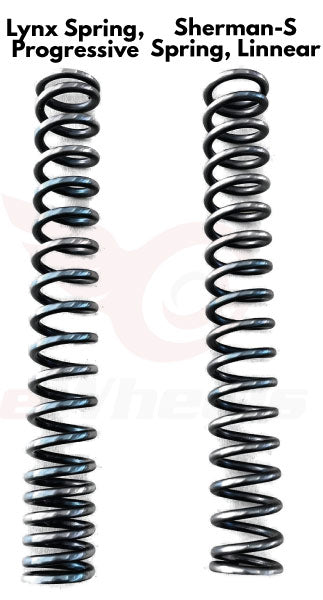
Wheel Customization from App
With the release of v1.4.1, in early June, the Leaperkim App now supports all the Wheel customizations that could previously only be performed from the on-board display. While the display's interface is functional, it had its limitations, Customers had to use a code map to determine what they were changing & scrolling through the navigation menu was tedious, leading to frustration.
Leaperkim's new App allows you to use your phone to conveniently/easily change all the parameters of the ride in one easy to use place. In contrast with the other manufacturers Apps, LK's is relatively lightweight, free from the social-media bloat & other unwanted 'features' that made useability problematic.
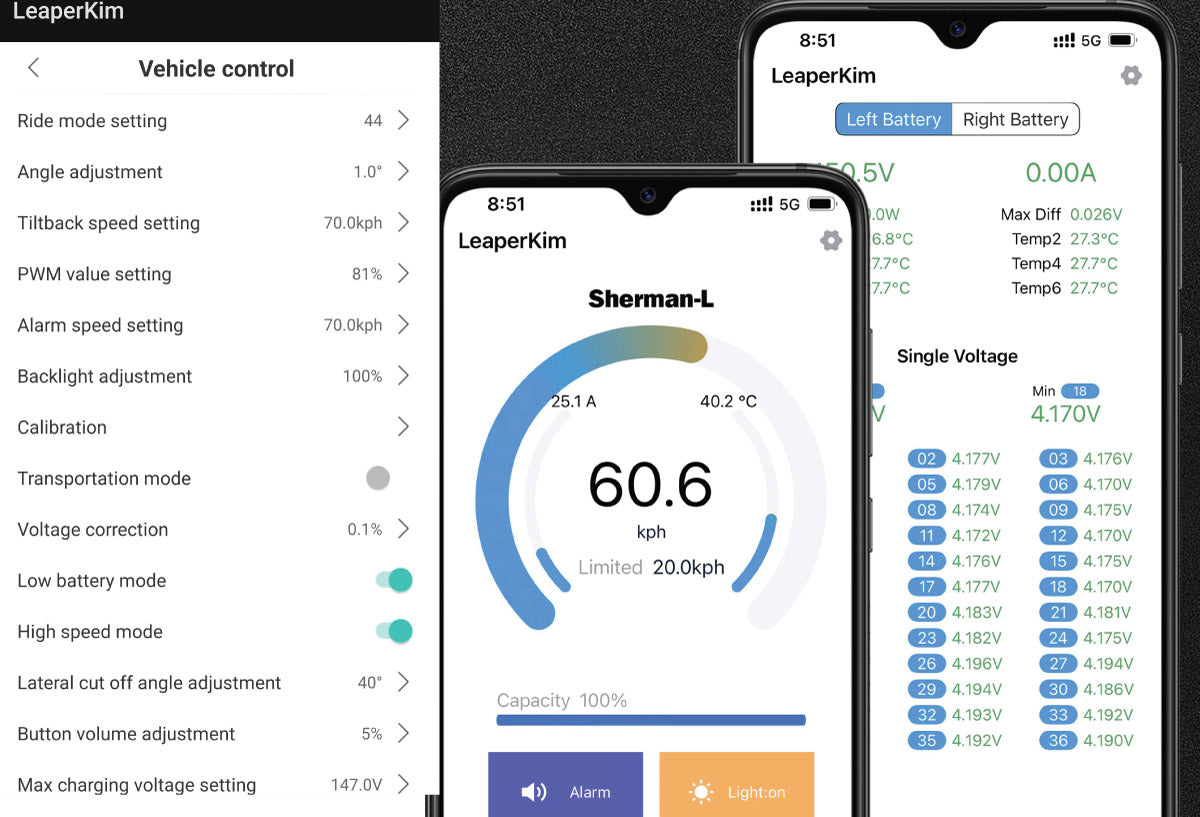
NEW: Upgraded Samsung High-Power 50S Battery Pack
The most valuable component of any Wheel is its battery pack, the beating pulse of the machine. Over the years it has been found, from painful experience, that pairing a high-powered machine with a battery cell that is not designed for high peak-power applications can result in latent/delayed catastrophic thermal runaway events. To try to minimize this risk, we at eWheels, have insisted the use of high-powered battery cells, particularly on smaller 4 parallel packs, such as the MTen4, A2, T4, S18, Hero, S22, & Master—as the number of parallels increase, the load on each cells decreases accordingly. Until recently, there was the trade-off between power & capacity; now, with the advent of the new Samsung 50S cell, one can have both!
- Energy Density: 50S has a 20% increase in energy density over the 40T, providing a corresponding increase in range without any weight/bulk penalty.
- Higher Operating Temperatures: the specifications of the 50S has a vast operating range, from -20 to 80°C/-4 to 176°F vs -20-60°C/-4-140°F with the commonly used 50E/GB cell & as high as 100°C/212°F in Samsung’s test data! This massive margin not only allows the 50S to output up to 3x more power than the 50E, but perhaps more importantly, will greatly improve battery pack safety, there is no conceivable scenario in which these limits will ever be reached, or exceeded.
- Power Output: the maximum sustained power output on the 50s is 45A vs 15A on the 50E. At pack level, this represents a total potential sustained output of 15,120W, on the Lynx. From a Rider’s perspective, the main benefit of having this power on-tap is once the pack(s) have been partially depleted, reducing the risk of cut-outs when power is required.
- Rapid-charging: another benefit of the 50s over the 50E is charging rates, 2.25x higher, 6A vs 2.5A. It should be noted that although the cell supports the higher charging current, there may be other factors that limit maximum charge rate, such as the charge-port, wiring & BMS components. On the Lynx, the maximum rate of charge should not exceed 16A.
- Superior Cycle-life: perhaps the most common misconception of high-power cells is that of reduced cycle-life, but this is fundamentally a misunderstanding of the published datasheet for battery cells. In these publications, Samsung’s data is based on exceedingly high sustained loads of 25A/45A. Other Samsung materials demonstrates that in 10A continuous load scenario, the 50S commands a slight lead over the the 50E for longevity, with >82% capacity retention over 600 cycles.
It should also be noted that these synthetic tests in no way represent the power demand pattern that is experienced when using your machine, where the average load, on flat terrain, will be closer to 2-3A/cell vs the 10A in the test data—there may be periods where this demand is considerably more than the 10A, which is where the high-power cells really come into their element. In addition, the [50S] 600 cycles were charged at the maximum 6A vs a typical 1.5A (per parallel) with the stock charger, which also has an impact on the pack’s longevity.
In summary, the 50S battery cell is objectively superior in every measurable metric, with only a marginal increase in upfront cost. It is expected that machines fitted with these packs will retain their value better than other battery cells.
